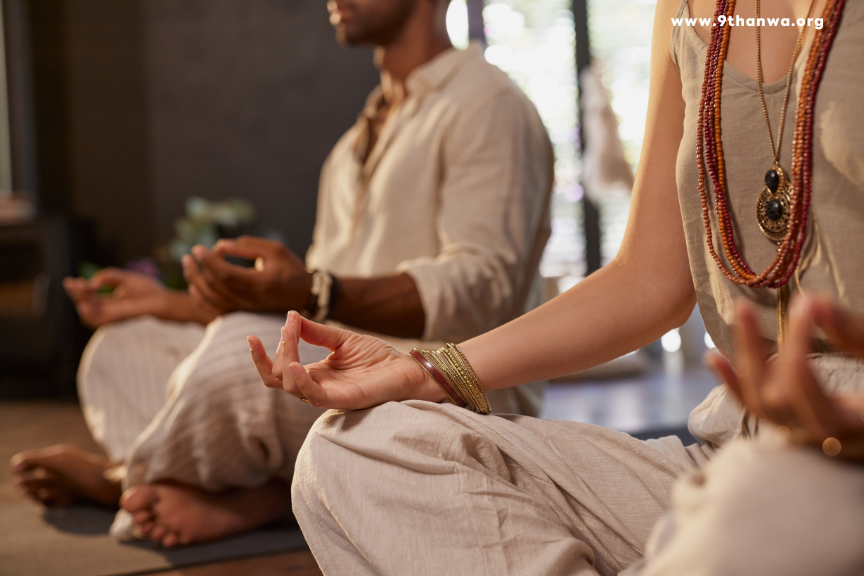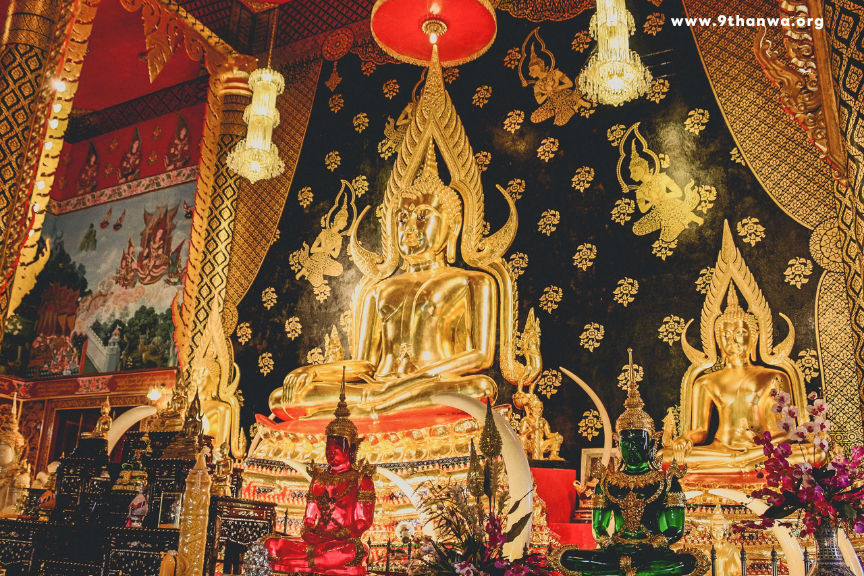🕉️ Buddha Statues: What Each Pose Represents – Understanding the Meaning Behind the Sacred Poses

Buddha statues are not only revered as religious icons in Thai culture, but they also hold deep symbolic meanings. Every pose, gesture, and facial expression of a Buddha statue carries a specific message, representing aspects of the Buddha’s teachings and his journey towards enlightenment.
Whether displayed in temples, homes, or gardens, Buddha statues provide more than just a peaceful ambiance — they are a reflection of spiritual wisdom. In this article, we will explore the different Buddha poses and what they represent in the context of Buddhism and Thai culture.
🌿 1. The Dhyana Mudra (Meditation Pose)
One of the most recognizable Buddha poses is the meditation pose, also known as the Dhyana Mudra. In this pose, the Buddha sits in a cross-legged position, with his hands resting in his lap, palms facing upward, and the tips of his thumb and index finger touching to form a circle.
-
Meaning: This pose symbolizes meditative concentration and represents the Buddha’s journey towards enlightenment through deep meditation.
-
Spiritual Significance: The Dhyana Mudra is often associated with mental clarity, mindfulness, and inner peace. It encourages individuals to cultivate a calm and focused mind through meditation.
-
Cultural Importance: This pose is widely seen in Thai temples and is often used as a reminder for practitioners to cultivate stillness and focus.
🌸 2. The Abhaya Mudra (Fearlessness Pose)
The Abhaya Mudra is a common pose in Buddhist art, where the Buddha is depicted with his right hand raised, palm facing outward, while the left hand rests by his side.
-
Meaning: This pose represents fearlessness and protection. The raised right hand signifies that the Buddha is offering protection from fear, and is often accompanied by the reassurance to “be fearless” in the face of life’s challenges.
-
Spiritual Significance: The Abhaya Mudra symbolizes courage, spiritual strength, and the Buddha’s message of peace. It teaches that fear is an illusion and encourages individuals to face challenges with confidence and mental fortitude.
-
Cultural Importance: In Thai culture, this pose is commonly seen in statues outside temples or near entrances to symbolize protection and calmness.
🌱 3. The Bhumisparsha Mudra (Earth Touching Pose)
The Bhumisparsha Mudra is one of the most iconic poses in Buddhism, where the Buddha is depicted seated in meditation with his right hand reaching down and touching the earth, while the left hand remains in his lap.
-
Meaning: This gesture is known as the earth-touching pose, and it symbolizes the Buddha’s earthly enlightenment. It represents the Buddha’s call to the earth as a witness to his enlightenment.
-
Spiritual Significance: The Bhumisparsha Mudra signifies the Buddha’s victory over Mara (the demon of illusion and temptation), representing the moment of enlightenment. It teaches the power of patience, humility, and the earth’s grounding force.
-
Cultural Importance: This pose is often associated with the Buddha’s final victory over suffering, and it serves as a reminder to stay grounded and connected to the earth and present moment.
🔮 4. The Vitarka Mudra (Teaching Pose)
The Vitarka Mudra is the gesture of teaching, where the Buddha is depicted with his right hand raised in a circle, with the index finger touching the thumb, while his left hand remains in a prayer position.
-
Meaning: This pose represents the transmission of wisdom and is often used in statues where the Buddha is shown teaching his followers the Dhamma (Buddhist teachings).
-
Spiritual Significance: The Vitarka Mudra symbolizes the flow of knowledge and the Buddha’s role as a teacher. It signifies that the Buddha’s teachings are being passed on to the world for the benefit of others.
-
Cultural Importance: In Thai temples, this pose is often used to depict the Buddha as a compassionate teacher, sharing his wisdom with the world and leading others towards spiritual liberation.
🌸 5. The Seated Buddha (Posture of Wisdom)
The seated Buddha is a pose often depicted in a cross-legged sitting position, with the hands resting in the lap in a relaxed manner.
-
Meaning: This pose symbolizes the Buddha’s calmness, wisdom, and equanimity. It represents the Buddha’s teaching on how to achieve balance and harmony through the practice of meditation and mindfulness.
-
Spiritual Significance: The seated Buddha teaches that inner peace is found through stillness and cultivating mental clarity. It also represents the Buddha’s teachings on letting go of attachments and the desire for worldly possessions.
-
Cultural Importance: This pose is one of the most common in Thai temples and is often seen in statues in meditation halls, reminding practitioners to seek inner peace and wisdom through regular meditation practice.
✨ Final Thoughts
Each Buddha statue and pose carries a rich spiritual meaning that can serve as a guide for those seeking enlightenment and peace in their lives. Whether it’s through the Dhyana Mudra, the Bhumisparsha Mudra, or the Vitarka Mudra, each gesture is an invitation to deepen one’s practice and embrace the Buddha’s teachings of compassion, wisdom, and fearlessness.
Explore more about Buddhist symbols, Thai culture, and spiritual teachings at 9thanwa.org.


